
Electric cars are no longer niche vehicles, and the new 2023 Subaru Solterra and 2022 Hyundai Ioniq 5 demonstrate how far the mainstream has swung toward battery-powered crossover SUVs.
The duo also represent a trend of automakers partnering up to split costs in a rapidly developing global marketplace shaped by emissions regulations.
The Ioniq 5 and the related Kia EV6 share a platform and have the same electric vehicle development resources, yet the two electric crossovers could never be mistaken for one another. The Solterra rises out of another partnership with Toyota, who teamed to co-develop the Toyota GR86 and Subaru BRZ sport coupes. Yet the Solterra looks and feels so much like the Toyota BZ4X inside and out that the two could appear interchangeable.
Sized like a Subaru Forester but styled like the Toyota RAV4, the Solterra wears black cladding all over the bumpers, rockers, and fenders, where it wraps around the LED headlights to create the automotive equivalent of racoon eyes. Aerodynamics influence everything from the side curtains to the roofline, which flows into an unusual split roof spoiler and down a raked rear windshield that lacks a wiper. Inside, the recessed instrument cluster set close to the windshield and far from the driver sits removed from a wide center console that is characteristically Toyota.

2023 Subaru Solterra
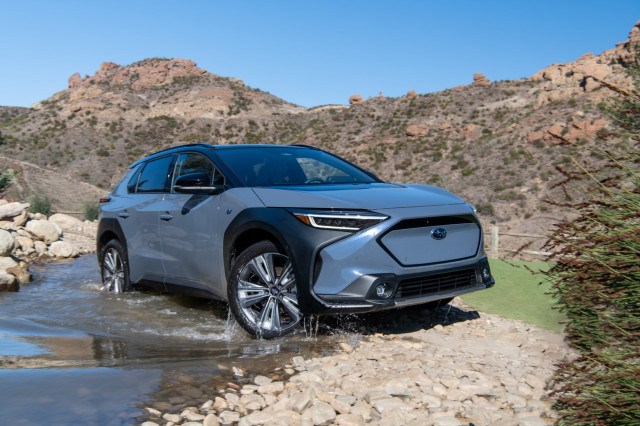
2023 Subaru Solterra
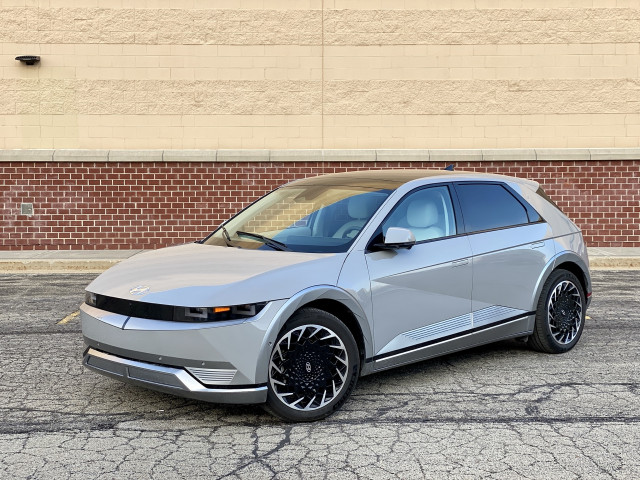
2022 Hyundai Ioniq 5
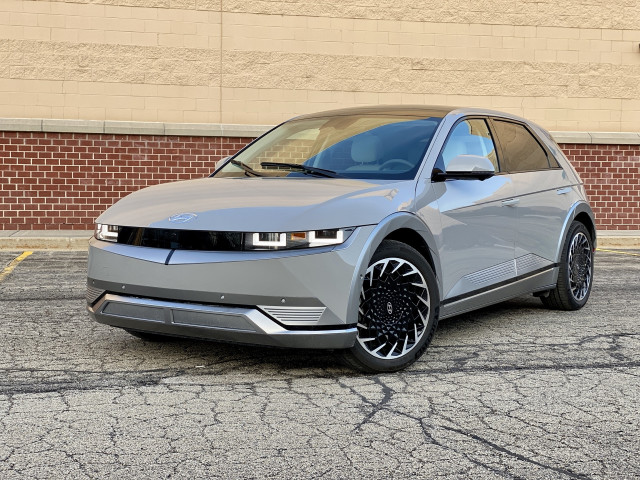
2022 Hyundai Ioniq 5
The interior of the Ioniq 5 takes the opposite approach, with a wide open floor and small armrest console that can be moved front to back 6.0 inches to push it even farther out of the way. A pair of 12.3-inch screens rise from a dash underlined by a panel of haptic climate control buttons. It’s distinctive, not just to Hyundai but to the Ioniq series of EVs.
The unique look extends to the exterior styling as well. The retro hatchback vibe features a squat rear, a prominent nose, diagonal cuts across the body, and LED headlights and taillights that look like something from an 8-bit game. It attracts attention, and in our testing got far more compliments than the anodyne Solterra.
The Ioniq 5 is quicker and nimbler than the Solterra as well. It has a 77.4-kwh battery pack, and can be fitted with a 225-hp single motor and rear-wheel drive, or a dual-motor all-wheel-drive version that makes 320 hp and 446 lb-ft of torque; a smaller 58-kwh battery pack is planned for later this year. It can lean in turns, and the independent suspension is tuned to the soft side, but the AWD model shoots to 60 mph in 5.0 seconds.
The Solterra takes about 6.5 seconds to hit 60 mph, is more plodding, and rides more like a traditional crossover. Except in Subaru’s case, it’s uncharacteristically quiet. It comes with a 72.8-kwh battery pack and the standard dual-motor all-wheel-drive system churns out 218 hp and 249 lb-ft. The Ioniq 5 may be better on the road, but the Solterra, with its 8.3 inches of ground clearance and three off-road settings, can hit the dirt trails with the same sense of adventure as other Subies.
In an odd switch, the Solterra can’t tow but the Ioniq 5 can haul up to 2,000 lb.
Range tops out at 228 miles in the Solterra, and it has an EPA efficiency rating of 3.1 miles per kwh. DC fast-charging at a rather modest 100 kw can restore up to 80{09e594db938380acbda72fd0ffbcd1ef1c99380160786adb3aba3c50c4545157} charge in less than an hour, and Subaru has partnered with the EVgo charging network, but benefits to owners haven’t been finalized.
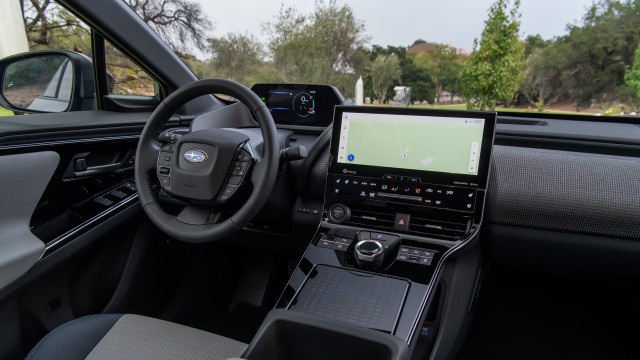
2023 Subaru Solterra

2023 Subaru Solterra
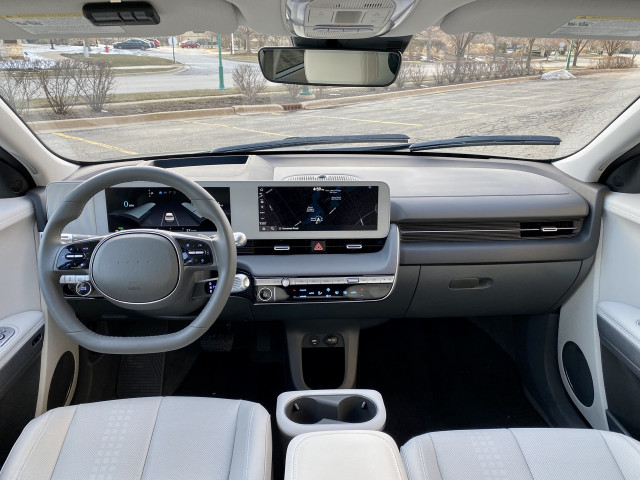
2022 Hyundai Ioniq 5
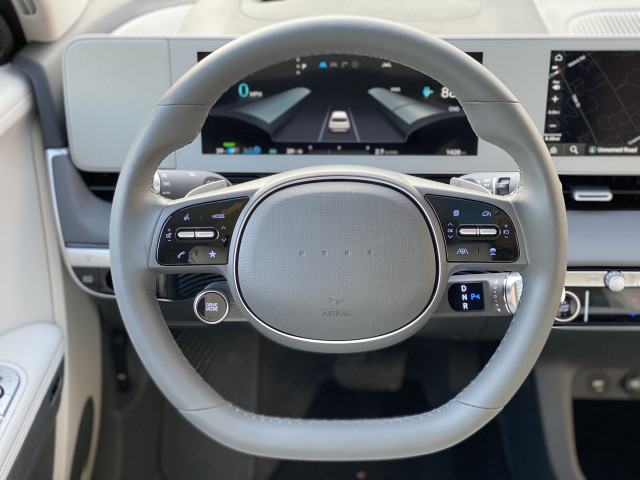
2022 Hyundai Ioniq 5
The Ioniq 5 outpaces the Solterra for range, efficiency, and charging ability; AWD versions of the Ioniq 5 have a 256-mile range (303 miles with RWD), and an efficiency rating of 3.3 miles per kwh. On DC fast-charging at up to 240 kw, the Ioniq 5 powers up to 80{09e594db938380acbda72fd0ffbcd1ef1c99380160786adb3aba3c50c4545157} in just 18 minutes. In addition, it has a vehicle-to-load function that lets owners power appliances at a campsite, for instance, or charge another EV.
Both vehicles use paddle shifters for four grades of regenerative braking, with the Ioniq 5’s most aggressive setting taking the car down to a complete stop. The Solterra has a fifth setting, called S-Pedal that’s supposed to act like one-pedal driving, but it doesn’t come to a complete stop. They both have three drive modes, Normal, Sport, and Eco, with the latter softening the pedal feel and reducing the air conditioner output.
The Ioniq 5 has the advantage on interior space as well. Riding on a 118.1-inch wheelbase, which is longer than the Palisade three-row SUV, the Ioniq 5 seats up to five people in comfy seats, and the second row can recline and move forward and back. The fixed glass roof and open floor plan give it a spaciousness you can’t get in combustion engine cars.
The Solterra may ride quieter than the Ioniq 5, but the roominess is compromised by a tall, wide center console that eats up leg and hip room. Its wheelbase is 6.0 inches shorter, and it seats five though four would prefer if you didn’t. All seats are covered in water-repellent animal-free synthetic leather upholstery. A crossbar splits the panoramic sunroof, so headroom feels a tad tighter, too. Available roof rails give its buyers typical Subaru utility, and the roof can support a static load of 700 lb to strap on that rooftop tent.
Both cars have 60/40-split folding rear seats, but the Solterra ekes out a bit more cargo room at 30 cubic feet versus 27.2 cubes in the Ioniq 5. Tiered cargo floors and clever storage areas grace both models, but the Ioniq 5 has a small frunk for the charge cord while the Solterra doesn’t.
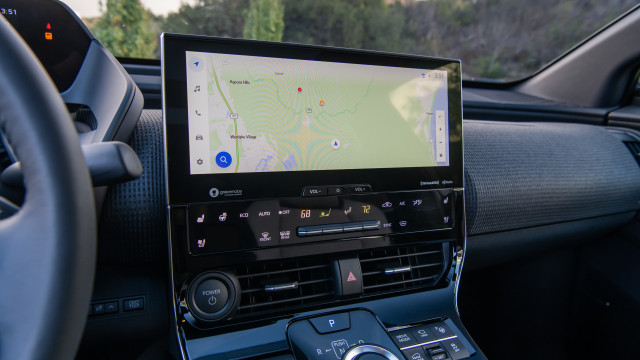
2023 Subaru Solterra
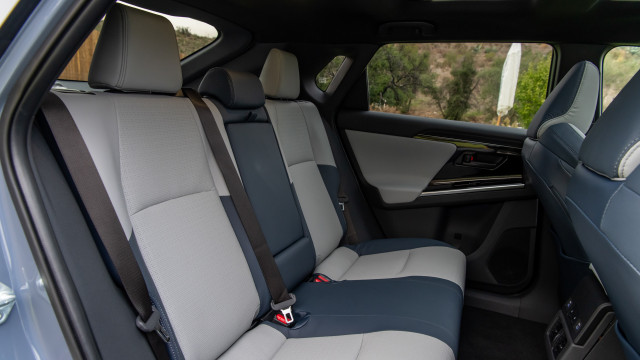
2023 Subaru Solterra

2022 Hyundai Ioniq 5
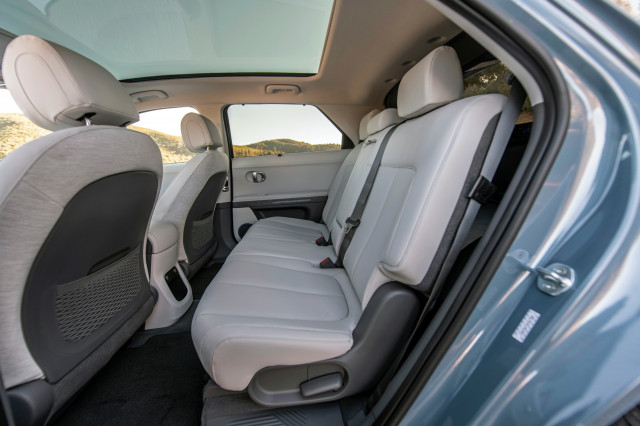
2022 Hyundai Ioniq 5
Toyota’s much improved new infotainment system simplifies controls in the Solterra, which also has hard buttons for climate controls and drive modes, whereas most everything must be done via Hyundai’s touchscreen. Voice commands in both are excellent and limit the reliance on touch inputs, but the Solterra’s instrument cluster wastes space, especially in comparison to the Ioniq 5’s HD dynamic cluster. With the exception of wireless Apple CarPlay and Android Auto in the Solterra, the Ioniq 5 has a better feature set, plus a better 5-year/60,000-mile warranty (the Solterra’s is 3/36,000), though both electrified systems are warrantied for 100,000 miles.
Both vehicles come with excellent driver-assist features, including automatic emergency braking, active lane control, and automatic high beams, but Subaru adds adaptive cruise control as standard. Crash tests have not yet been completed on either model.
The 2022 Hyundai Ioniq 5 scores a high TCC Rating of 8.4 out of 10, and outperforms the Solterra and its 7.6 rating in most categories in our testing. But the Solterra capitalizes on the adventuring self-image of Subaru owners and marks an important first step in Subaru’s future. With the Ioniq 5, however, the future has already arrived.